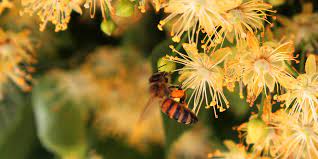Table of Contents
With the arrival of spring, pollen allergies have become a worry for many people. For those who are sensitive to pollen, how to protect themselves when going out has become an urgent problem to be solved. In recent years, pollen allergy silicone wristbands have gradually attracted people’s attention and become a new choice for personal protection. This article will give you a detailed introduction to pollen allergy silicone wristbands and their advantages and effects in personal protection based on specific examples.
Principle and function of pollen allergy silicone wristband
The Pollen Allergy Silicone Wristband is a piece of personal protective equipment specially designed for people with pollen allergies. Its core principle is to reduce the human body’s contact with pollen by adsorbing and collecting pollen particles in the air, thereby achieving the purpose of preventing allergies. The silicone material has excellent adsorption and durability, and can effectively capture and fix pollen particles in the air. At the same time, anti-allergic ingredients are often added to the inside of the wristband to relieve allergy symptoms.
Advantages and effects of pollen allergy silicone wristbands
Real-time monitoring and early warning: Some advanced pollen allergy silicone wristbands also have the function of monitoring pollen concentration and remind users of the pollen status of the current environment through smart devices or mobile applications.
Easy to carry: The silicone wristband is lightweight and comfortable, and can be worn on the wrist anytime and anywhere, providing effective protection whether in outdoor activities or indoor work.
Scientific protection: Compared with traditional protective equipment such as masks and glasses, pollen allergy silicone wristbands more scientifically solve the way pollen enters the human body, reducing exposure to allergens from the source.
Personalized customization: Silicone wristbands come in a variety of colors and patterns. Users can choose and customize them according to their own preferences, which not only meets the protection needs, but also highlights their personal style.
Comfort and durability: The silicone material is soft and will not cause discomfort when worn for a long time. At the same time, due to its strong adsorption capacity, the wristband has a relatively long service life.

User reviews and example sharing
Ms. Zhang is a white-collar worker who is severely allergic to pollen. She is particularly distressed every spring. “I used to always wear a mask and glasses, but sometimes I still feel that I can’t protect myself.” Ms. Zhang said, “Since using the pollen allergy silicone wristband, I feel more at ease. It can absorb the pollen around me at any time, and It’s so stylish that I even use it as an accessory to match my outfits.”
Mr. Li is an outdoor sports enthusiast and often participates in hiking and cycling activities. “I used to worry about pollen every time I went out,” Mr. Li said. “Now with the pollen allergy silicone wristband, I can enjoy the beauty of nature without worrying about allergies.”
Aunt Wang is an old man who has suffered from pollen allergies for many years. “Since using this wristband, my symptoms have been significantly relieved.” Aunt Wang said, “Especially when the weather is bad and the pollen concentration is high, I feel much more at ease when I wear this wristband.”
Market Prospects and Future Outlook
As people pay more and more attention to health issues and increase environmental awareness, more and more consumers are looking for more scientific and effective personal protective equipment. As an emerging protective product, pollen allergy silicone wristband has broad market prospects and development space. In the future, with the continuous advancement of technology and the expansion of application fields, pollen allergy silicone wristbands are expected to achieve greater breakthroughs and innovations in materials, functions, and design.
How to choose the right pollen allergy silicone wristband
Choose a well-known brand: Try to choose a brand that is well-known and has a good reputation to ensure product quality and effectiveness.
Understand the material and craftsmanship: A high-quality silicone wristband should have the characteristics of strong adsorption, wear resistance, and resistance to deformation. At the same time, attention is paid to its production process and detail processing to enhance the user experience.
Consider individual needs: Choose the appropriate color, pattern and size according to personal preferences and style, and make the silicone wristband a part of your fashion accessory.
Pay attention to how to use: Wear the pollen allergy silicone wristband correctly and make sure it fits your wrist tightly so that it can better absorb and protect.
Regular replacement and cleaning: In order to maintain its adsorption performance and service life, it is recommended to clean and replace the wristband regularly. Also be sure to store it in a dry, dark place.
Pay attention to user reviews and feedback: Before purchasing, you can check the reviews and usage experiences of other users to better understand the advantages, disadvantages and applicability of the product.
Cooperate with other protective measures: Although the pollen allergy silicone wristband can effectively reduce pollen exposure, it is still recommended to take other protective measures such as wearing masks, goggles, etc. to protect yourself from allergens in an all-round way.

Seek professional advice: For people with severe allergies or those who have suffered from allergies for a long time, it is recommended to consult a doctor or professional to learn about a personalized protection plan that suits you.
Environmental awareness: When choosing a pollen allergy silicone wristband, try to choose products that use environmentally friendly materials and sustainable production methods to do your part to protect the environment.
Click here for more information about wristbands: https://www.topwristband.com
Reference Website:https://www.betterhealth.vic.gov.au/health/conditionsandtreatments/pollen-allergies

